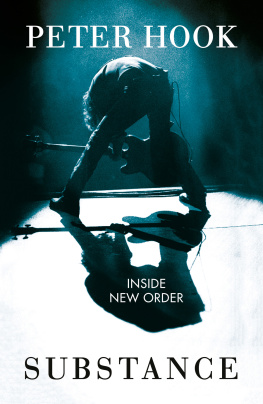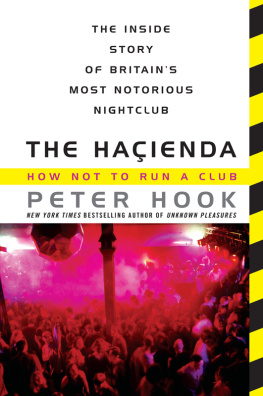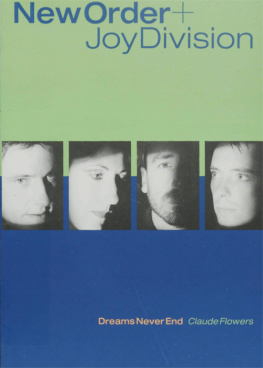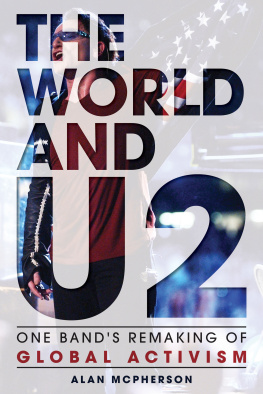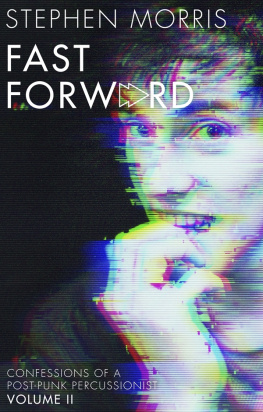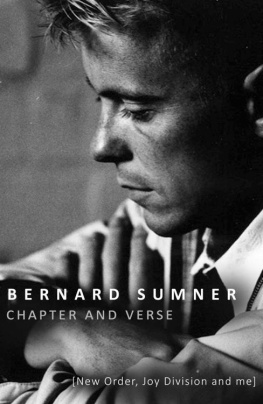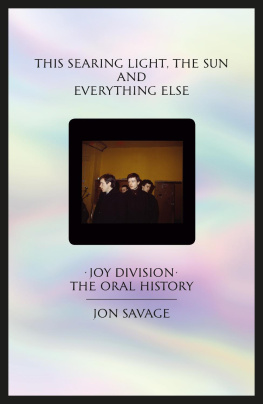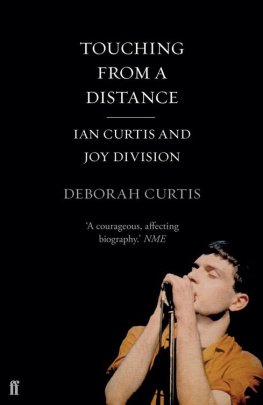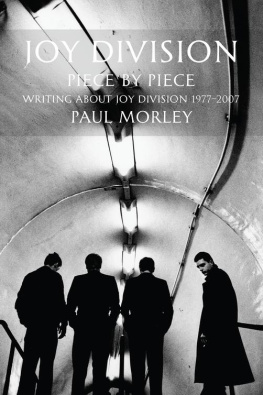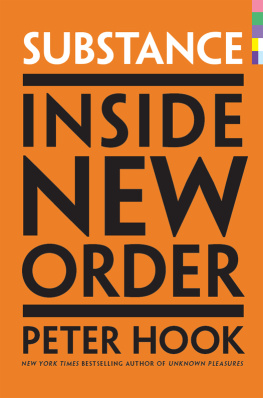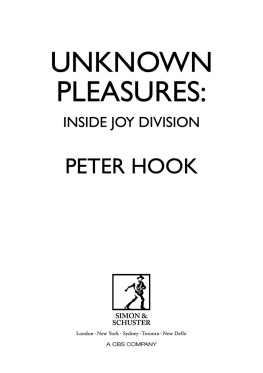
Rest in peace: Jean Jackson, Billy Blue Hook, Wilma Tinks Hook, Rex Sargeant, Annik Honore, Paul (Twinny) Bellingham, Michael Shamberg, Jack Bruce, Steve Strange, Anne Kirkbride, Ben E. King, BB King, Joe Moss, Pete de Freitas, Errol Brown, David Bowie, Tony Warren, John Rhodes (Rhodesy) and Paul Kershaw of the Stockholm Monsters, Kirsty Howard, Harold Moores, Paul Massey, Vinegar Vera, Natasha Wise, Alan Wise (Impressario Extraordinaire), Howard Marks, Caroline Aherne.
This book is the truth, the whole truth, and nothing but the truth... as I remember it!
Note to Readers
Some readers may find discrepancies in the running times of New Order recordings when checked against those found on numerous websites. The timings listed in this book are to the best of my knowledge correct as the tracks were recorded at the time.
INTRODUCTION
When I started my first book about the Haienda, I knew that if I ever got round to telling the New Order story it would be the most difficult by far. In twenty-six years of New Order there were some wonderful moments, but there was also a lot of pain and heartbreak, self-doubt, frustration and annoyance. Its a wonder any of us got through it.
If Joy Division defined my life, New Order shaped it: a fascinating story of sex, drugs and (indie) rocknroll; of art, money and crass stupidity, blind faith and amazing good luck backed by a soundtrack of truly great songs written by wonderful musicians.
Ten things you should always do when you form a group
1. Work with your friends
2. Find like-minded people
3. Have ultimate self-belief
4. Write great songs
5. Get a great manager
6. Live in Manchester
7. Support each other through thick and thin
8. Realise no one person is bigger than the group (thanks to Gene Simmons for that one)
9. Watch where the money goes
10. Always get separate legal advice for everything before you sign; failing that, ask your mam and dad
PROLOGUE
1985

Kevin Cummins
Turned out his cure for jetlag was the biggest line of coke Id ever seen.
Lets start with a story. Its the only one in the book that includes a Hollywood actress, Orchestral Manoeuvres in the Dark and a mushroom vol-au-vent, so its unique in that regard. On the other hand its got a few other themes thatll be cropping up as we go along (girls, cocaine, Barney being a twat...) so its a good one to set the scene.
It starts in 1985 when New Order were told, firstly that John Hughes was using two of our songs for his new film, Pretty in Pink , and secondly that he wanted a new track written especially for the movie to replace them.
So that was good. Unfortunately, somebody came up with the bright idea of getting the new song produced by John Robie and, oh man, back then I hated John Robie with a passion. He could sometimes be what you would call a very interesting/difficult character. Wed met him on the Confusion session with Arthur Baker in New York. But, as my roadie mate Twinny said, Hes not one of us, Hooky.
When we were mixing his version of Sub-culture at the Village Recorder, a studio in Santa Monica, California (where Fleetwood Mac had recorded Tusk , the most expensive album ever made, costing over $1 million dollars, although we would eventually eclipse that with one of our own), he had impressive bravado when it came to girls, something I could only dream of. He would approach girls in restaurants, clubs etc., offering them the chance to do some backing vocals on a track he was recording with New Order, a group from Eeengerland. They always said yes, so every night wed have a studio full of giggling airheads, with certain members of our entourage (a phrase you shall be reading a lot during this book) all over them like a cheap suit.
Not only that, but it was my belief that in one fell swoop Robie had helped destroy a huge part of the magic of New Order, simply by telling Bernard, You do realise this songs not in your key, dont you?
Of course Bernard didnt realise the song wasnt in his key. None of us did. We didnt know anything about stuff like that. We always wrote the music first, and what Id always loved about Barneys vocals was the unintentional strained quality as he tried to fit into the track. Like Ian, he wasnt blessed with the worlds best singing voice, but it had emotion, passion, and to me the struggle in Bernards voice was a major part of the bands appeal. (I agree with David Byrne, who said, The better a singers voice, the harder it is to believe what theyre saying.)
Not after Robie. After he piped up, we always had to write in Bernards key. Not only that, but it marked a new awakening. Suddenly Bernard was thinking, Oh, theres a right way of doing things? A proper way of doing things? and over time it got so that not only were we writing everything in the same one or two musical keys, but every song had to have a vocal verse, a vocal bridge, a vocal chorus, a vocal middle eight (that was different) and finish with a vocal double chorus. To me that went against everything wed ever set out to achieve. We were about tearing up and rewriting the rulebook, not consulting it every five bloody minutes; we were punks, rebels.
If you ask me, the rules ended up blanding us out. They took us from writing great songs like Blue Monday, where we were building the sound we wanted a unique sound, nine minutes long, and if anybody had told us, You cant do that, we would have told them to fuck off to formulaic songs like Jetstream.
Anyway spit back to the winter of 1985, and because the rest of the band loved him, and he and Bernard were proper buddies, Robie flew over for the Pretty in Pink sessions at Yellow Two in Stockport, right across the road from Strawberry Studios. There, Robie spent his days pissing me off by removing my bass from Shellshock and putting the line on strings instead. You understand dont you, Hooky, hed smirk, while in the late evenings he swanned around the Haienda.
Wed introduce him to girls then stand there aghast as he came out with lines like, Oh, youve got a face like Botticellis Angel.
Fuck off, theyd say.
In America he had women queuing up for him, but God bless those Manchester girls for giving him short shrift.
Robie had a strict studio routine. Every night at 8 p.m. hed go upstairs to eat his pre-ordered Chinese takeaway. Hed sit in this funny little chair, all tied together with webbing, watch a bit of telly, eat his meal, and then return to the job of ruining New Order. One night the band were sitting upstairs after dinner and laughing about Robie always sitting in that particular chair when Barney suggested undoing the webbing, so it would collapse with him in it when he next sat down.
Brilliant , we thought, thatll be funny .
So he did it and it was. It was really funny. But of course Robie had sussed that I didnt like him, so when he fell through the chair and ended up with his Chinese all over himself, he blamed me. No matter how much I insisted I was an innocent bystander, he said he was going to get me back, get his revenge.
You wait, Hooky... You wait! hed drawl, all New Yorky.
But he didnt. Not during that session anyway. We finished Shellshock, gave it to John Hughes, and the next thing you know it was early 1986, and we were rolling up to the premiere of Pretty in Pink in Los Angeles at the Chinese Theatre. Psychedelic Furs were there, OMD, Echo and the Bunnymen, Suzanne Vega (who burst out crying because you could barely hear her track), loads of bands. Rob Gretton couldnt come. There was the small matter of a cocaine-induced psychosis keeping him in a mental hospital. So it was me, Terry Mason, Steve and Gillian and Bernard, who went with Robie, because you couldnt get a cigarette paper between them by then; they were a right pair of bosom buddies, almost an item.
Next page
